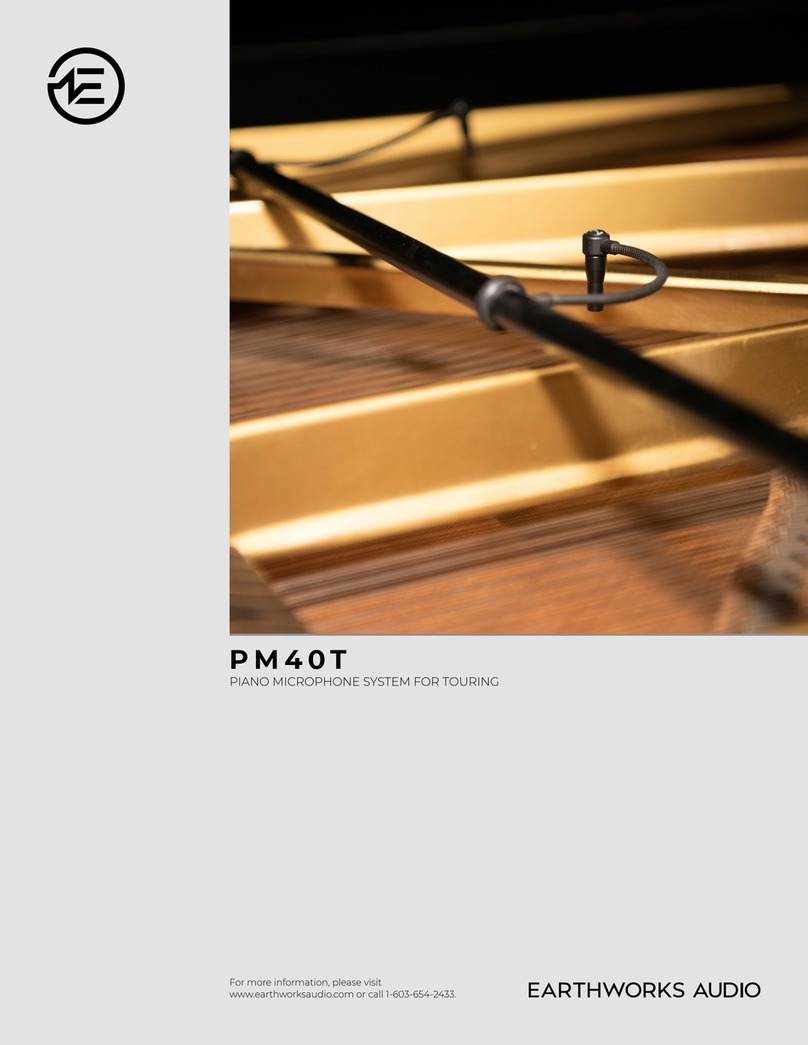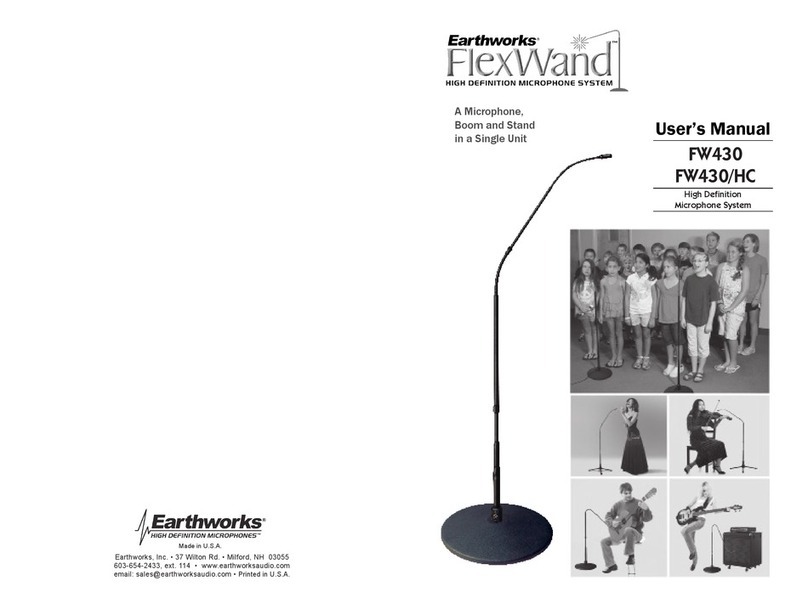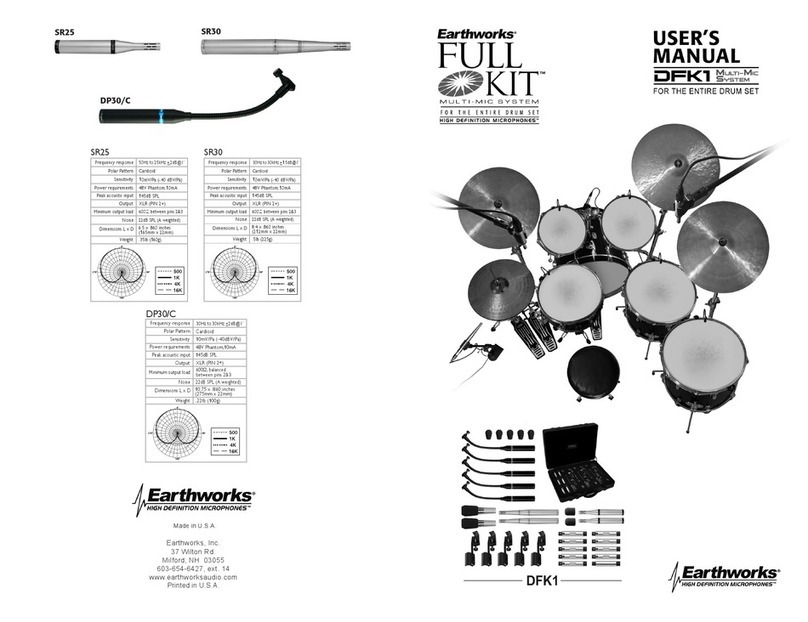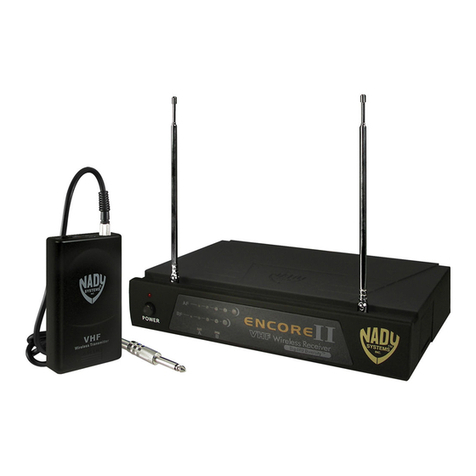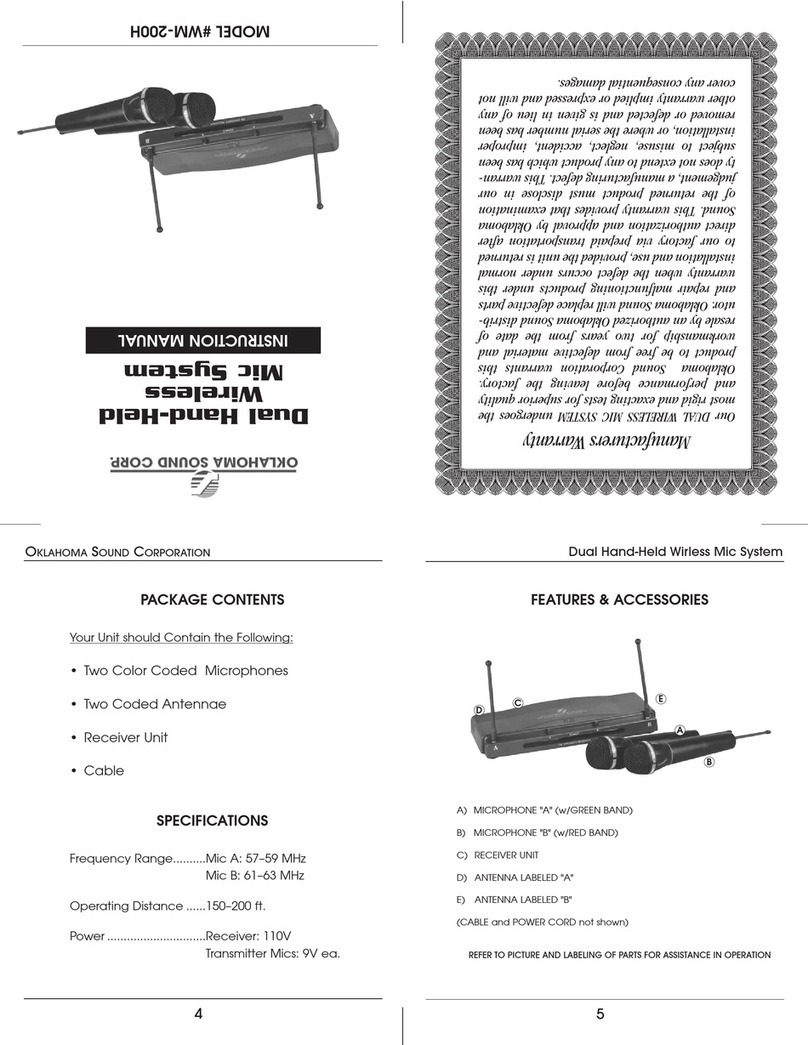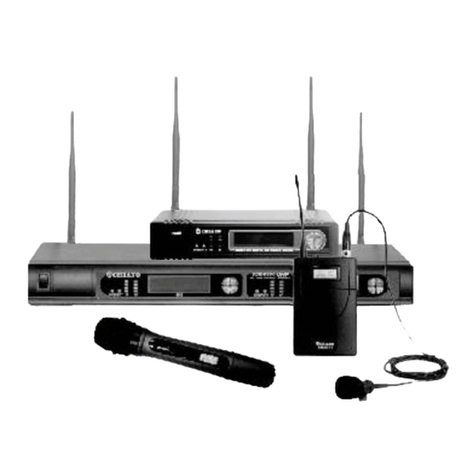Earthworks Drum Periscope™Microphones
The Earthworks DrumKit™ High Denition Three-Microphone Systems
have had great success because they pick up drum sounds with far more de-
tail and accuracy than conventional microphones. This improved sound qual-
ity is due to proprietary advanced technologies utilized in Earthworks High
Denition Microphones.
Many drummers such as Je Campitelli with Joe Satriani, Keith Carlock
with Steely Dan, and FOH engineers such as Randy Lane with Dream The-
ater, were using Earthworks High Denition Microphones™ for overheads
and kickdrum with exceptional results. They then wanted the same excep-
tional sound quality from their snare and tom mics. With the introduction of
the DP30/C microphone, they were able to get the same pristine, detailed
sound from their toms and snares as they were from their Earthworks High
Denition drum overhead mics.
We worked with major artists for nearly two years developing and eld
testing the DP30/C High Denition tom and snare mic. During the develop-
ment phase, we miked a set of drums with nine Earthworks High Denition
Microphones (including our new DP30/C tom and snare mics) and also nine
industry favored mics. When veteran engineers heard the dierence be-
tween these two recordings, they made the comment that the improvement
was so dramatic, it didn’t even sound like the same set of drums. They all
agreed, “the increase in detail and sound quality was astounding.”
The DP30/C was designed specifically for snare and toms that features a
flexible mini-gooseneck for easy positioning in addition to a high acoustic
input level that can handle up to 145 dB SPL. The Earthworks patented
polar technology provides excellent rear rejection and a uniformity of fre-
quency response out to 90 degrees off-axis. This vastly reduces phase
cancellation or other phasing issues, and minimizes cymbal leakage as
well as acoustic feedback problems in “live sound” applications.
Earthworks High Definition Microphones™
the New Science in Microphones
David Blackmer, the brilliant engineer who invented the unique technolo-
gies of dbx, is also the inventor and founder of Earthworks. In the last few
years of his life, David developed a number of revolutionary technologies
that dramatically improve the quality and performance of microphones.
In short, Earthworks High Definition Microphones™ will pick up sounds
and detail that other microphones cannot. These technological improve-
5
The flexible mini-gooseneck will allow you to move the microphone head
either up or down above the drumhead as well as in and out from the
drum rim. In addition, you can change the angle of the microphone head
for your desired results. Figure 6-A shows how the microphone head can
be rotated while Figure 6-B shows how the microphone head can be
moved more toward the center of the drum by changing the positioning
of the mini-gooseneck.
Figure 6-A and 6-B Positioning the Microphone Head
Plug in the LevelPad, if necessary
In close miking drums, one should keep in mind that the peak sound
level at the microphone head is extremely loud. Microphones used for
close miking drums should have a sound pressure handling capability of
at least 140dB SPL to prevent audible distortion. The Drum Periscope™
microphones will handle up to 145dB SPL without distortion. However,
as mentioned earlier, with this kind of high sound pressure level, it is
possible for the microphone output to be as much as +24dBV which may
overload some microphone preamplifiers. The use of the Earthworks Lev-
elPad in the microphone line will prevent any such distortion or overload.
So, to be safe, we suggest that you first plug a LevelPad into the mic
line feeding the Drum Periscope microphone. For full information refer to
pages 3 and 4 of this manual.
Close Miking Snare Drums with the DP30/C
As previously mentioned, when close miking drums with a DP30/C micro-
phone, never position the microphone head parallel to the drumhead. Al-
ways position the microphone head at an angle to the drumhead. It is also
10
A. B.
